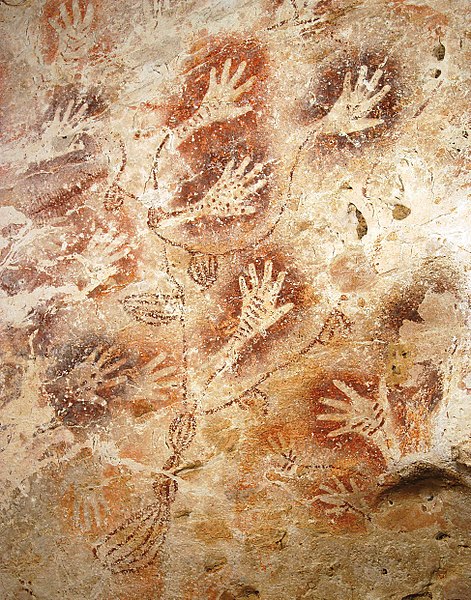Essential Details
| Interaction Type | People | Time | Stakes |
|---|---|---|---|
|
★ Learner-to-Learner ✖ Learner-to-Instructor ★ Learner-to-Content |
★ Individual ✖ With Others |
★ Asynchronous ✖ Synchronous |
★ Low-Stakes ✖ High-Stakes |
Description
Students spend some time looking at an image, video, or other artifact.
- See: Ask students what they observe and only that.
- Think: Ask students what they think is happening in the image, video, or object. This allows for multiple explanations and asks students to provide evidence.
- Wonder: Ask students what do they now wonder based on their observation and thinking.
- This is to move beyond interpretations to issues raised by object. You can tie student comments to course objectives or even more granular module-level objectives tied to this activity.
Example Prompt
Present this image: "Gua Tewet, the tree of life, Borneo, Indonesia" by Lhfage shared with CC0 (Public Domain Dedication)
- See: Observe this rock art mural. List details without making conclusions.
- Think: Think about what is happening in this image. How do the individual parts relate? What can you infer?
- Wonder: How do you think this was created? Was it an individual or collective creation? What else do you wonder about this? What do you think it means?
Bloom's level
The level in bold indicates this activity’s place within Bloom’s Taxonomy of learning (Cognitive Domain). Higher-levels contains lower-levels within it.
| Level | Action |
|---|---|
|
Sixth |
Create |
|
Fifth |
Evaluate |
|
Fourth |
Analyze |
|
Third |
Apply |
|
★ Second |
★ Understand |
| First | Remember |
Verb
Infer
Tools
- Canvas Discussion
- Canvas Assignment
Teaching Goal
The one main teaching goal for your activity
- Check for Understanding
Source
Ritchhart, R., Church, M., & Morrison, K. (2011). Making Thinking Visible: How to Promote Engagement, Understanding, and Independence for All Learners. John Wiley & Sons.
This book is available for check-out in the CETL Library.
